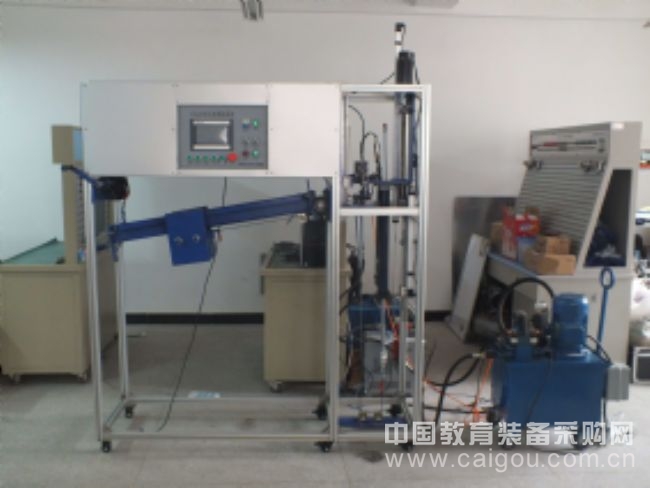[Wuhan University] Drill column heave compensation simulation experimental device
Introducing the Drill String Heave Compensation Simulation Experimental Device Offshore drilling presents unique challenges compared to onshore operations. Floating drilling platforms are subject to periodic heave motions caused by wave action, which can lead to unwanted movement of the drill string and fluctuations in bottomhole pressure. In severe conditions, this may even cause the drill bit to lose contact with the wellbore, reducing drilling efficiency and shortening the lifespan of both the drill bit and the drill pipe. In rough weather, these issues can halt drilling altogether. To address this, a drill string heave compensation device is used to counteract the platform’s motion and maintain stable drilling operations. Currently, real-world heave compensation systems are complex, space-consuming, and expensive. To make this technology more accessible for educational purposes, we designed a simulation experimental device based on similar principles used in offshore rigs. This device is suitable for use in a standard laboratory setting. It consists of three main components: a heave motion simulation unit, a heave compensation simulation unit, and a load simulation unit. The heave motion unit mimics the vertical movement of the drilling platform, while the compensation unit simulates the function of the compensating cylinder on the hook. The load unit replicates the changes in hook load during drilling. The control system of the device uses a PLC (Programmable Logic Controller) combined with a touchscreen interface, both housed within a control box. Servo motors and electro-hydraulic valves are all controlled via the PLC, which handles sensor data acquisition and I/O device control. The touchscreen communicates with the PLC through a serial connection, allowing users to input commands, monitor real-time data, and view experiment results directly on the screen. This user-friendly interface makes it ideal for students who are new to practical experiments. In addition to the standard PLC-touchscreen setup, the device also supports an advanced control method using xPC Target. This allows for more sophisticated experiments, such as those involving fuzzy or adaptive control, which are often part of postgraduate-level training. Both control modes operate in parallel and can be switched easily without affecting each other, providing flexibility for different learning levels. The human-machine interface is intuitive and easy to navigate. Most operations are performed through the touchscreen located on the front panel of the control box. Upon startup, the system displays a brief boot screen before entering the “Start Page,†which includes simple instructions and seven virtual touch blocks. Tapping any block leads to the corresponding operation interface, where users can input parameters, monitor the experiment, and output data. Two key features are the “PID Adjustment†and “Standby Control†interfaces. The “PID Adjustment†feature allows real-time monitoring of the heave platform and compensation cylinder displacement. Users can adjust the proportional, integral, and derivative terms in the lower parameter area to optimize the compensation effect. These settings can be saved to the PLC for future use, helping students grasp the fundamentals of electro-hydraulic position control and PID tuning. The “Standby Control†interface provides a virtual version of the physical control panel. By pressing buttons on the virtual panel, users can perform the same functions as the physical controls, reducing wear and tear on the actual buttons and minimizing errors from improper operation. The device also includes a “Data Record†function. Users can save experimental data according to the type of test and transfer it to an external USB drive for later analysis. This feature enhances the learning experience by enabling post-experiment data processing and interpretation. This experimental teaching device not only reflects industry standards but also helps students understand modern hydraulic technologies applied in geological engineering equipment. It is suitable for undergraduate courses across various mechanical disciplines and offers strong comprehensive performance. Through hands-on training, students gain practical insights into electro-hydraulic control principles and improve their ability to integrate theoretical knowledge with real-world applications. Title: Drill String Heave Compensation Simulation Experimental Device Developed by: China University of Geosciences (Wuhan)
The table placemat is a kind of thing that can protect, decorate table , it makes of PP material.Placemat has stronger frictional force to prevent glass, porcelain cup to slide, it can also protect desktop not to suffer very hot bad.The placemat can be used in various occasions, such as home ,hotel,restaurant,wedding party place and so on .
Table Placemats,Home Simple Table Mat,High Grade Color Printing Pad,Kitchen Waterproof Grease Pad shaoxing chaofeng stationery manufacturing CO.,LTD. , https://www.chaofengstationery.com

